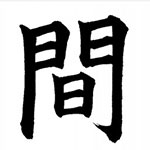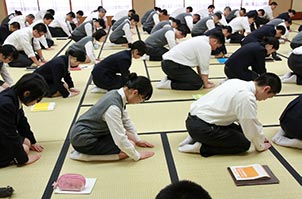When Less is More: Japanese Concept of "MA", Minimalism and Beyond
Posted by Yukiko Kisaki on 16th Sep 2023
Where there is clutter, even valuable things lose their value. Where there is too much, nothing stands out.

The essence of Japanese aesthetics is a concept called MA (pronounced “maah”), the pure, and indeed essential, void between all “things.”
A total lack of clutter, MA is like a holder within which things can exist, stand out, and have meaning. MA is the emptiness full of possibilities, like a promise yet to be fulfilled.
Minimalism and Beyond
 When you feel there is too much clutter, it’s not necessarily because you have too many things; it may be because you don’t have enough MA.
When you feel there is too much clutter, it’s not necessarily because you have too many things; it may be because you don’t have enough MA.
It is the presence of MA that makes the minimalism of a Japanese tatami room so serene. However, while minimalism is limited to physical form and space, MA is not.
MA is in the purposeful pauses in speech, the silence between musical notes, and the quiet moments that give our lives meaning. It is the essence of peace of mind, known as heijoshin in Japanese, that allows thoughts to breathe and flourish.
Examples in Daily Living
 Have you ever wondered why a Japanese bow feels so dignified and purposeful? From a young age, children in Japan are taught to pause briefly at the bottom of a bow before rising. That pause is where the MA resides. It is this moment of stillness that gives the gesture its weight and meaning.
Have you ever wondered why a Japanese bow feels so dignified and purposeful? From a young age, children in Japan are taught to pause briefly at the bottom of a bow before rising. That pause is where the MA resides. It is this moment of stillness that gives the gesture its weight and meaning.
In your busy day, if you have only a brief moment for a tea or coffee break, take it quietly and away from distractions. Surround yourself with stillness. Sip your drink gently and with intention. This is your time. Let the world wait a few minutes. That seemingly insignificant space, that tiny dose of MA, is what allows us to reset and return to our day with renewed clarity and calm.
Negative Space (and Time?)
 Artists understand the power of negative space, the emptiness that gives form its meaning.
Artists understand the power of negative space, the emptiness that gives form its meaning.
MA expands this idea into the realm of time. Even the briefest tasks deserve a beginning and an end. Without MA, our days become a blur of activity. Imagine writing a thoughtful, heartfelt letter with no commas, periods, or paragraphs. Without these pauses, it becomes a breathless heap, leaving meaning behind.
A Poetic View
 Here is an old poem about the meaning of MA:
Here is an old poem about the meaning of MA:
Thirty spokes meet in the hub,
though the space between them is the essence of the wheel.
Pots are formed from clay,
though the space inside them is the essence of the pot.
Walls with windows and doors form the house,
though the space within them is the essence of the house.
Learning to Let Go
Modern life often drives us to accumulate things in never-ending cycles, chasing the elusive promise of fulfillment. But the more we collect, the more we part with the serenity of stillness and the quiet sense of completeness.
To live fully is to move with grace, embrace possibility, and create space... not by holding on, but by letting go.
This is the essence of MA.

